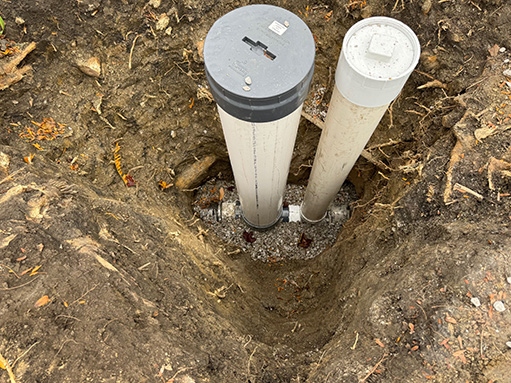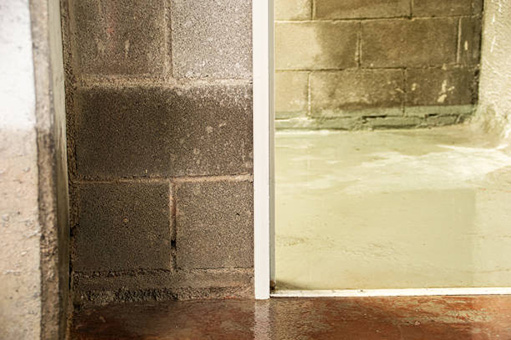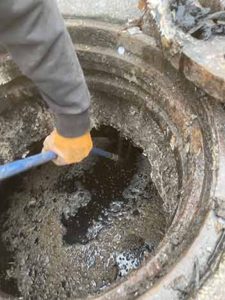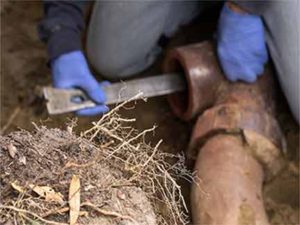A sewer backflow valve (also known as a backwater valve or sewer backup valve) is a valve you install in your sewer line to ensure that wastewater can only flow in one direction in the pipe. A sewer backflow valve keeps the contents of your sewer line from entering your home during a sewer backup.
In normal circumstances, the water inside your sewer line should flow from your home to the city sewer lines in the street. That is accomplished using the force of gravity. Sometimes, heavy rains can overwhelm the city sewer lines and cause sewage to push backwards into the sewer line and enter your home.
Sewer backflow valves are installed in the sewer line to prevent this costly plumbing emergency in your home, notes the Rockbridge Real Estate team. How does a sewer backflow valve work, how many types of backflow valves are there, and does your home need a sewer backflow valve? Find the answers to these questions in the details below.
How does a sewer backflow valve work?
In the simplest terms, a sewer backflow valve stops sewage from entering your home by opening when water is flowing away from the building and closing if water starts moving toward the house. The components of a sewer backflow valve and details of its operation are explained in the next section.
The sewer backflow valve contains a small flap that can close or open to stop or permit water flow. On the two sides of this flap are small flotation devices. The valve also serves the purpose of letting sewer gases vent. For easy access during maintenance and repair, the backflow valve is often installed inside a cleanout.
To protect your home, the flap stays in the down position when the flow of water inside the sewer line is normal. But if sewage starts to flow backwards, the floaters inside the valve raise the flap to close the channel and keep sewage from entering the home. When the situation returns to normal, gravity pulls the flap back down to reopen the sewer line.
Benefits of a sewer backflow valve
Prevent damage to your home
Significant damage can happen to your home and belongings if sewage ever backs up into the house. You never know when the conditions for a sewage backup will be fulfilled. That is why you should protect your home with a sewer backflow valve.
Save your money
A sewer backflow valve protects your finances by helping you avoid the high cost of fixing damage caused by sewer backup in your home. The cost of installing a sewer backflow valve is minor compared to the cost of fixing water damage to your home.
To keep your home up-to-code
Sewer backflow valves are required by the building codes for some areas. Installing the valve ensures that your home is safe from sewage backup and helps you avoid trouble with the authorities.
Types of sewer backflow valves
There are six types of sewer backflow valves:
Horizontal 4-inch Backwater Valve
This is used in horizontal drain lines and is the most common sewer backflow valve found in homes and small commercial buildings.
Vertical / 90-degree Backwater Valve
This sewer backflow valve is best for vertical piping in tight spaces within areas with a high risk of backflow.
Horizontal Backwater Valve & Manual Gate Valve Combination
This is a compact valve that is easier to install. Its main drawback is that it cannot be repaired.
Terminal Backwater Valve
This is installed at the discharge point of a horizontal sewer line in situations where you do not need to control sewage flow.
Floor Drain and Backwater Valve Combination
As its name implies, this type of backflow valve is installed in a floor drain, usually within the basement.
Open Backwater Valve
This is used in lines with a low risk of backflow but where the sewage flow is constant.

If your home has plumbing fixtures where the drain is at a lower level than the public sewer line, you need a sewer backflow valve.
Does your home need a sewer backflow valve?
If any of the following applies to your home, you need a sewer backflow valve:
- If your area is prone to flooding, your home needs a sewer backflow valve in its main sewer line.
- If your home has plumbing fixtures where the drain is at a lower level than the public sewer line, you need a sewer backflow valve.
- You need a sewer backflow valve if your ground floor is not more than 30 cm above the street level.
- If you have had previous cases of sewage backup in your home, you need a sewer backflow valve.
To conclude, note that you will need to get a permit before installing a sewer backflow valve in your home. Installing a sewer backflow valve is not a DIY project. Before hiring a plumber to install a sewer backflow valve in your home, ensure they are experienced and understand the unique plumbing issues of homes in your area.


